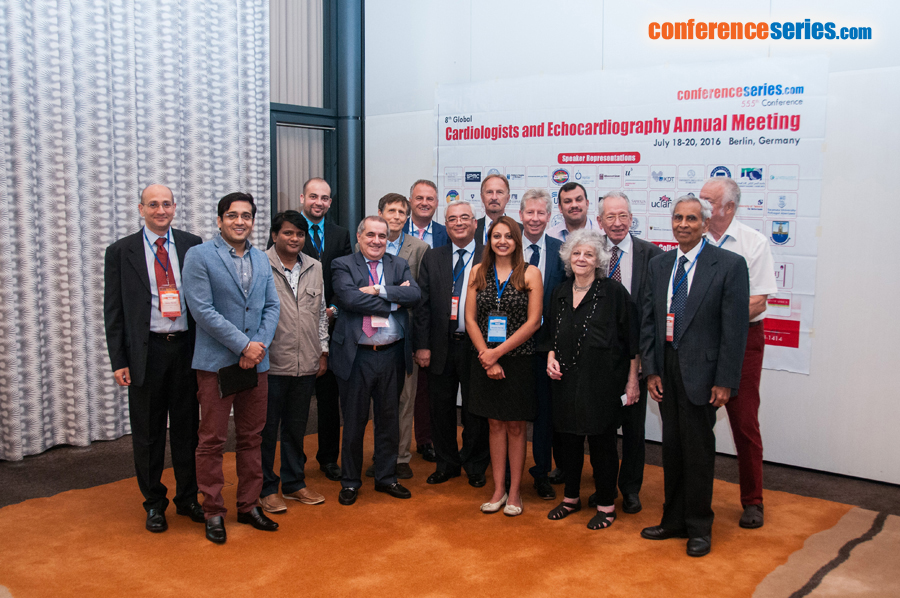
Guy Hugues Fontaine
Universite Pierre et Marie Curie, France
Title: Electrogenesis of Epsilon wave - A comprehensive review of this new ECG waveform
Biography
Biography: Guy Hugues Fontaine
Abstract
Epsilon wave was the name given to the second of double epicardial potentials recorded in patients with resistant ventricular tachycardia treated by antiarrhythmic surgery (Fontaine AHA abstract 1976). The timing of the first normal potential fell inside the QRS complex of the surface tracing; the second abnormal potential occurred after the end of the QRS complex. Other approaches were used to detect this delayed electrical activity which showed a spectrum of morphologies including fragmented potentials after the end of QRS complexes on the surface ECG, also called “Epsilon waves”. This anomaly was also recorded from an endocardial catheter, as well as on the standard ECG; more precisely on a bipolar precordial lead for Holter recording. It was also extracted by the summation averaging technique in patients who did not have Epsilon waves on the standard ECG despite the presence of epicardial Epsilon waves (Fontaine Kulbertus book 1977). Their behavior in sinus rhythm during stimulation and during VT has been described. Particular techniques have been studied to improve their detection on the surface ECG by increasing the sensitivity of the ECG recording, as well as filtering of the signal from an optimal bipolar precordial lead position (Fontaine Parmley book 1991). Detailed descriptions of these potentials suggest a post-excitation phenomenon due to an intramyocardial conduction defect well understood by the pathology of ARVD. This was consistent with a reentrant phenomenon. Finally, standardization of this approach led to the “Fontaine Lead System” (FLS) according to Dr. Willis Hurst who published in Circulation 1998 his discussion about “The naming of the waves in the ECG, with a brief account of their genesis”. The quantitative aspects on a new series of 43 patients were reported (Fontaine Ann Cardiol Angeiol 1993). We now present for the first time recording of Epsilon waves that are present before as well as after spontaneous episodes of ventricular tachycardia with an insertable loop recorder (Medtronic “Reveal”) in a patient with ARVD discovered after multiple episodes of acute myocarditis (Fontaine Europace in press). The brand new Schiller ECG High Definition machine will be able to detect more precisely fragmented potentials in the Epsilon wave and even inside the QRS complex in cardiomyopathies in general as well as in CAD. Conflict of interest: GF is a consultant for ECG machines, Defibrillators, new Chest compressor, Hypothermia for brain protection in OHCA and Stroke for the Schiller Company, Baar, Switzerland.




